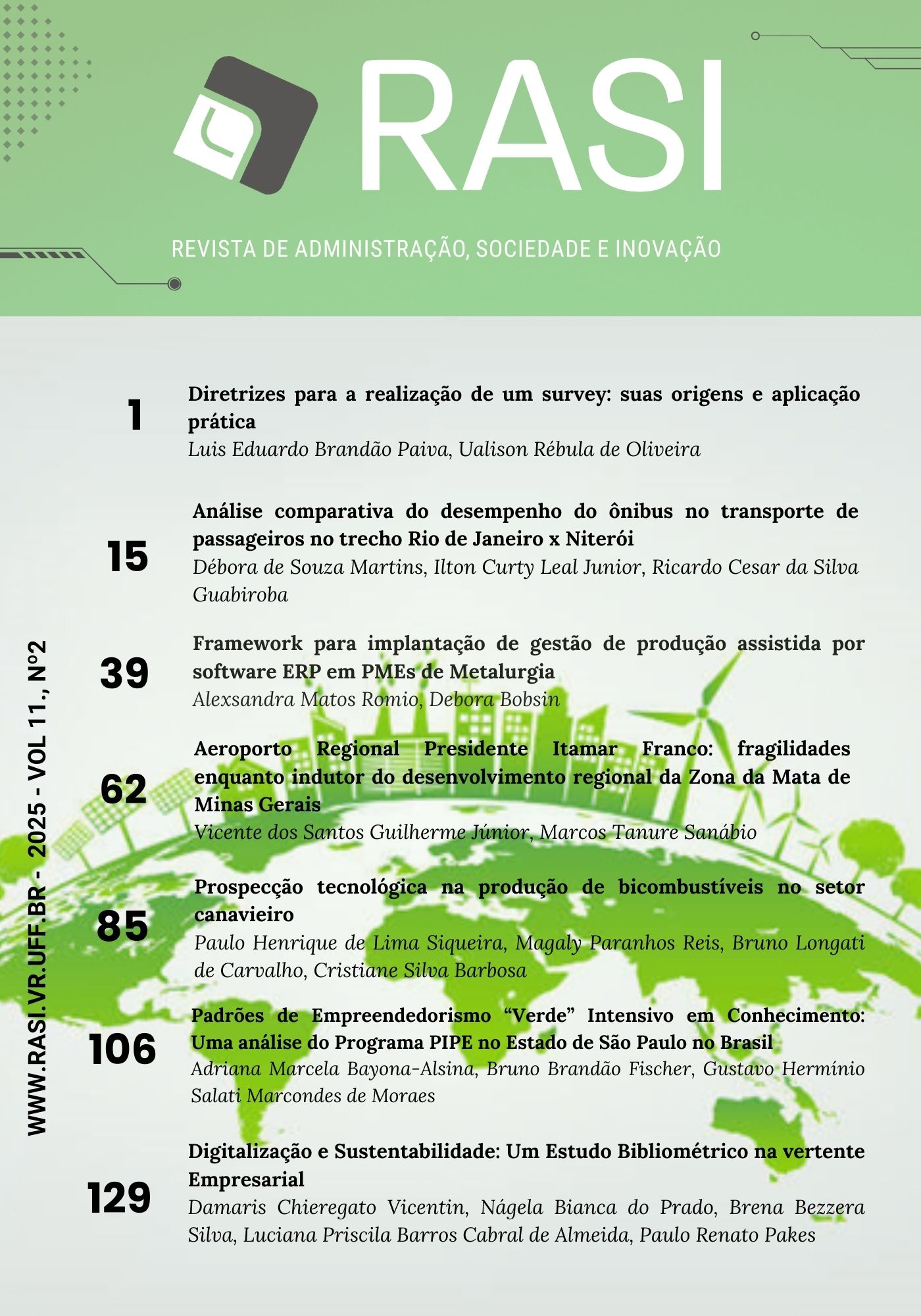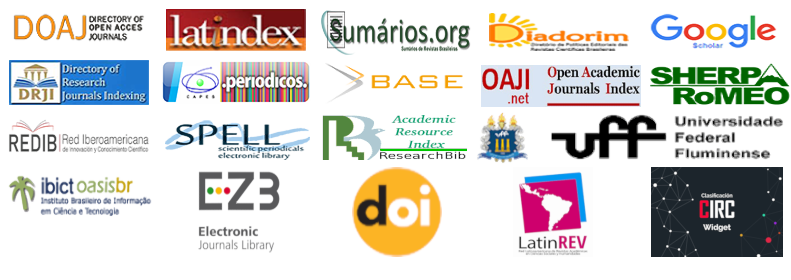Diretrizes para a realização de um survey: suas origens e aplicação prática
DOI:
https://doi.org/10.20401/rasi.11.2.1072Keywords:
Survey, InovaçãoDownloads
References
Andersen, J. P., Horbach, S. P. J. M., & Sørensen, M. P. (2025). Generative artificial intelligence (GenAI) in the research process – A survey of researchers’ practices and perceptions. Technology in Society, 81, 102813. https://doi.org/10.1016/j.techsoc.2025.102813
Anderson, M. J. (2015). The American census: A social history. Yale University Press.
Babbie, E. R. (1999). Métodos de pesquisas de survey. Belo Horizonte: Ed. da UFMG.
Babbie, E. R. (2020). The practice of social research. Cengage Au.
Boyd, D., & Crawford, K. (2012). Critical questions for big data: Provocations for a cultural, technological, and scholarly phenomenon. Information, communication & society, 15(5), 662-679.
Bryman, A. (2016). Social research methods. Oxford university press.
Creswell, J. W., & Creswell, J. D. (2017). Research design: Qualitative, quantitative, and mixed methods approaches. Sage publications.
DeVellis, R. F., & Thorpe, C. T. (2021). Scale development: Theory and applications. Sage publications, 1.
Dillman, D. A., Smyth, J. D., & Christian, L. M. (2014). Internet, phone, mail, and mixed-mode surveys: The tailored design method. John Wiley & Sons.
Fowler, F. J. (2014). Pesquisa de levantamento. Penso.
Groves, R. M., Fowler Jr, F. J., Couper, M. P., Lepkowski, J. M., Singer, E., & Tourangeau, R. (2011). Survey methodology. John Wiley & Sons.
Ivankova, N. V., & Creswell, J. W. (2009). Mixed methods. Qualitative research in applied linguistics: A practical introduction, 23, 135-161.
Jentoft, N., & Olsen, T. S. (2019). Against the flow in data collection: How data triangulation combined with a ‘slow’interview technique enriches data. Qualitative Social Work, 18(2), 179-193.
Krueger, R. A., & Casey, M. A. (2014). Focus groups: A practical guide for applied research. Sage publications.
Lilien, G. L., Rangaswamy, A., & De Bruyn, A. (2017). Principles of marketing engineering and analytics. DecisionPro.
Mineiro, M. (2020). Pesquisa de survey e amostragem: aportes teóricos elementares. Revista de Estudos em Educação e Diversidade - REED, 1(2), 284-306.
Morgan, D. L. (1996). Focus groups as qualitative research. Sage publications, 16.
Stewart, D. W., & Shamdasani, P. N. (2014). Focus groups: Theory and practice. Sage publications, 20.
Tourangeau, R., & Yan, T. (2007). Sensitive questions in surveys. Psychological bulletin, 133(5), 859.
Vehovar, V., & Manfreda, K. L. (2017). Overview: online surveys. The SAGE handbook of online research methods, 143-161.
Wu, Y., Cegielski, C. G., Hazen, B. T., & Hall, D. J. (2013). Cloud computing in support of supply chain information system infrastructure: Understanding when to go to the cloud. Journal of Supply Chain Management, 49(3), 25–41. https://doi.org/10.1111/j.1745-493X.2012.03287.x
Downloads
Published
Issue
Section
License
Copyright (c) 2025 Review of Administration, Society and Innovation

This work is licensed under a Creative Commons Attribution 4.0 International License.
RASI, in accordance with Law No. 9,610 of February 19, 1998, which amends, updates and consolidates Brazilian copyright law and makes other provisions, adopts the following conditions of the Copyright Assignment:
1. RASI maintains, with the transfer of copyrights, the possession of rights over the content published;
2. The author retains his moral rights of the content, including the right to be identified as the author whenever the content is published;
3. Despite the attribution of copyright, the author retains the right to reuse the material in future collections of his own work without encumbrance. The acknowledgments of the previous publication in the RASI are the only requirements in such cases;
4. The author may make photocopies of the content, or distribute it by electronic mail or fax, provided that they are intended for their own classes and for the purpose of meeting research objectives, provided that: (a) such copies are not resold and (b) reference to the original source of the publication and the name of the RASI are clearly indicated on all copies made of the document.











